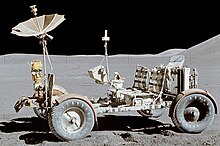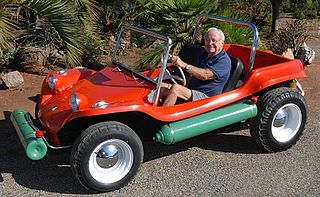
A dune buggy — also known as a beach buggy — is a recreational motor vehicle with large wheels, and wide tires, designed for use on sand dunes, beaches, roads or desert recreation.

A coupe or coupé is a passenger car with a sloping or truncated rear roofline and two doors.

A recreational vehicle, often abbreviated as RV, is a motor vehicle or trailer that includes living quarters designed for accommodation. Types of RVs include motorhomes, campervans, coaches, caravans, fifth-wheel trailers, popup campers, and truck campers.
There are many types of car body styles. They vary depending on intended use, market position, location, and the era they were made in.

The Renault Alliance is a front-wheel drive, front-engine subcompact automobile manufactured and marketed in North America by American Motors Corporation (AMC) for model years 1983–1987. The Alliance and its subsequent hatchback variant, the Encore, were re-engineered Renault 9 & 11 for the U.S. and Canadian markets.

A truggy is a type of high performance off-road racing vehicle that combines features from two older existing categories of off-road racing vehicles, trucks and buggies. The first truggies were built for racing in the SCORE and BITD off-road desert racing series, held in Mexico, California, Nevada and Arizona.

The Meyers Manx dune buggy is a small recreationally-oriented automobile, designed initially for desert racing by Californian engineer, artist, boat builder and surfer Bruce F. Meyers. It was produced by his Fountain Valley, California company, B. F. Meyers & Co. from 1964 to 1971, in the form of car kits applied to shortened chassis of Volkswagen Beetles. The car line dominated dune racing in its time, breaking records immediately, and was eventually also released in street-oriented models, until the company's demise due to tax problems after Meyers's departure. New vehicles inspired by the original Manx buggy have been produced by Meyers's re-founded operation, Meyers Manx, Inc., since 2000. The name and cat logo of the brand derives from the Manx cat, by virtue of the tailless breed's and the shortened vehicle's truncated "stubbiness".
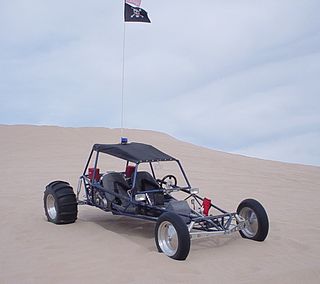
A sandrail, also called a sand rail, rail, or sand car, is a lightweight off-road motor vehicle specifically built for traveling in sandy terrain. Similar in some respects and often mistakenly referred to as a dune buggy or sand car, a sandrail is a different type of speciality vehicle. Sandrails are popularly operated on actual sand dunes. Sandrails can be driven on other types of terrain but are designed specifically for sand.

Development of the automobile started in 1672 with the invention of the first steam-powered vehicle, which led to the creation of the first steam-powered automobile capable of human transportation, built by Nicolas-Joseph Cugnot in 1769. Inventors began to branch out at the start of the 19th century, creating the de Rivas engine, one of the first internal combustion engines, and an early electric motor. Samuel Brown later tested the first industrially applied internal combustion engine in 1826.
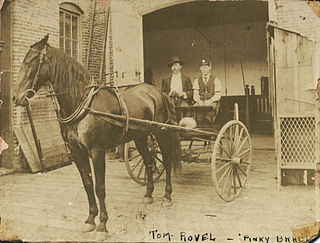
A fire command vehicle, also known as a fire chief's car or flycar, is a car used by a senior officer of a fire department to respond to firefighting incidents. Its specialized markings clearly indicate the rank of the senior officer.

The Desert Patrol Vehicle (DPV), formerly called the Fast Attack Vehicle (FAV), is a high-speed, lightly armored sandrail-like vehicle first used in combat during the Gulf War in 1991. Due to their dash speed and off-road mobility, the DPVs were used extensively during Operation Desert Storm. The first U.S. forces to enter Kuwait City were United States Navy SEALs in DPVs.

In automobile design, a rear-engine design layout places the engine at the rear of the vehicle. The center of gravity of the engine itself is behind the rear axle. This is not to be confused with the center of gravity of the whole vehicle, as an imbalance of such proportions would make it impossible to keep the front wheels on the ground.

John William Lambert was an American automobile manufacturer pioneer and inventor. He is the inventor of the first practical American gasoline automobile. He operated large manufacturing companies that made transmissions, stationary gas engines, farm tractors, commercial motor trucks, railroad inspection vehicles, and various gasoline driven street cars. He had over 600 patents. In 1891, he built a working gasoline automobile, one year before the Duryea Brothers constructed theirs.

Off-road karting uses a four-wheeled powered vehicle designed for off-road use as opposed to the longer established activities of racing go-karts used for racing on a paved road circuit. Off-road go-karting is now well-established and popular activity with a burgeoning range of vehicles, options, and adherents.

The Amphicat is a six-wheel-drive, skid steer amphibious all-terrain vehicle invented in Spain by José Artés de Arcos, manufactured in the late 1960s through the early 1970s by Mobility Unlimited Inc. of Auburn Hills, Michigan. The product line was purchased by Magna American which produced the vehicle in Raymond, Mississippi for several years. The vehicle was also made in Canada by Behoo Industries and differed slightly from its American counterpart, mostly on the transom.
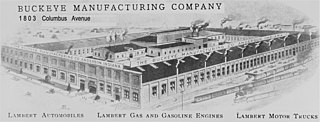
The Buckeye Manufacturing Company was a company founded in 1884 by John William Lambert and his family members originally to manufacture horse drawn buggy parts in Union City, Ohio. The enterprise started with $2,000 and six men and some helper boys. The company got involved in making tools and one early horseless carriage automobile.

The Buckeye gasoline buggy, also known as the Lambert gasoline buggy, was an 1891 gasoline automobile, the first made in the United States. It was also the first automobile made available for sale in the United States. It was initially a three wheel horseless carriage, propelled by an internal combustion gasoline engine; it was later developed into a four-wheel automobile with a gearless transmission, and mass-produced during the first part of the twentieth century. The platform was later expanded into a line of trucks and fire engines.

Charles H. Black was an American carriage wagon maker and automobile leader whose business was in Indianapolis, Indiana. As a skilled blacksmith craftsman and designer of carriage wagons, he was led into the idea of making a self propelled vehicle that would run under its own power. Black first produced a steam engine self powered vehicle. He improved on this technology and, in 1891, produced a vehicle that used a single-cylinder 18 horsepower gasoline engine. He drove this vehicle around Indianapolis for twenty years as his own personal car.
Gottfried Schlöemer or Godfrey Schlöemer (1842–1921) was a coopersmith, mechanical engineer, and inventor who lived in the south part of Milwaukee, Wisconsin, US. His ancestors were from Germany and Prussia, as was his wife.

The Volkswagen ID. Buggy is an electric dune buggy concept revealed by German automobile manufacturer Volkswagen at the 2019 Geneva International Motor Show.

